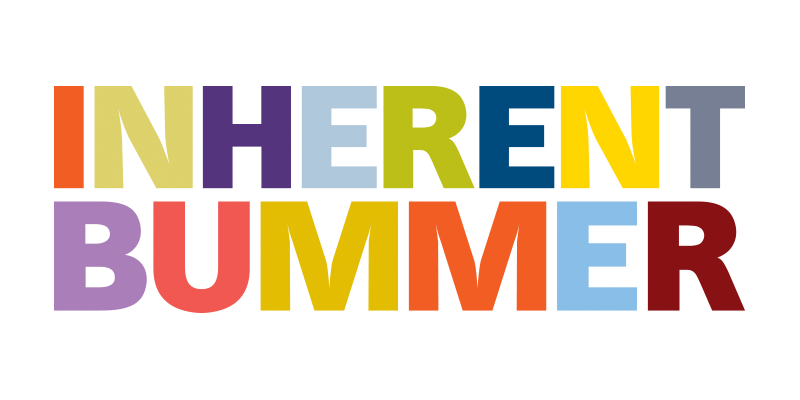A (Surf) Reading List
I’m fully aware that due to the strong distraction capabilities of fantasy football, Instagram, laptops, YouTube, Surfline cams, Twitter, Twitch, Tik-Tok and White Claws, reading is not a priority anymore. Reading books about surfing might be something you’ve never even considered.
Long before all these distractions pulled our noses from the printed page, I HATED reading books about surfing. I found them overly pretentious. Exhaustingly gaudy. Full of watery words that neither captured the spirit of the thing nor described anything remotely related to the experience or the actual culture. I say this as someone who has written about surfing for almost 15 years: books about surfing are an extremely tough sell.
My disdain for surf books changed when I read the Pulitzer Prize winning and deservedly obsessed-over Barbarian Days by William Finnegan. This book’s prose saved the written surf culture. It’s since led me through a brief, but significant renaissance on reading the written surf word.
So with that, I give you a couple of books that might remind you, deep down, somewhere buried in our storied and sometimes sordid history, we still got it. May we all learn to give less fucks. Together.
Here’s a few books I’ve read recently that dare to rip:
In Search of Captain Zero by Allan C. Weisbecker
This book nearly found its way to me on several different occasions, but I never read it. I’d always heard a variety of polarizing things about this book. Strong opinions. About Allan. About the movie deal that never happened (that is now happening). About the story: Road trip through Baja with a dog blah blah blah. But the book finally made its way to me and I loved it. It’s partly about a friendship, partly about reminiscing on old times with said friend, partly about past lives of drug running pot for cash through Central America, partly about the indefinable nature of riding waves. All of those things together usually still aren’t enough to get me into a surf book — but in this case, I got in, and I was sincerely and thoroughly entertained and delighted. My phone was lonely for hours at a time that week.
Excerpt: I always find the surf lineup a good vantage point from which to objectively review my situation and options. The enlightening perspective out there is partly a result of the inviolate solitude (interlopers are obvious on approach), and partly the effects of an aqueous environment womblike in its security, its easy, pacifying motion, its gently calmative murmur; circumstances that I believe put you in closer touch with the wisdom of the subconscious. And so it is with sadness, depression, angst, call a lowness of spirit what you will. When I hit the water with a surfstick, a lift is in the offing, along with a clarification of my thought processes.
Cocaine + Surfing by Chas Smith
I celebrate everything Chas Smith. He is our seminal surf/trash prose laureate and I am obsessed with his determined campaign to break up the conservative wet blanket that is modern surf culture. The title of his book Cocaine + Surfing is somewhat misleading once you read how Chas turns surfing’s (slightly) exaggerated coke lust into a commentary on our culture’s inability to be comfortable with its past. It’s 2019 and somehow surf culture has gone from beer-soaked saltwater dance party to a Mormon seminary class brought to you by GoPro and Drone. Chas’ exploration into surfing’s appetite for cocaine (and, importantly, its refusal to admit to any truths about cocaine) shows how surfing’s hunger for mainstream acceptance is the driving force (in a JEEP) down this WSL led freshwater wave pool Olympic SUP ISA thing that reeks so strongly of cheap Nautica cologne and chlorine.
Excerpt: Drugs and surfing, especially cocaine, felt synonymous with professional surfing those eight-odd years ago. It still does. It’s always snowing in Orange County, or so they say, and I look at Sophie. She is listening intently to the head of water safety at a perfect man-made wave, trying to turn this professional surfing into a proper sport while also respecting its past, God bless her, but as long as I’m around, that ain’t happening. Surfing, at its core, is an unruly, fouled, smutty disaster. Its past littered with felons, smugglers, addicts, narcissists, and creeps. Its present defined by crusty surf journalists and surf photographers. Its future a certain disaster – but it is our disaster. Our glorious disaster.
Inherent Vice by Thomas Pynchon
OK so this isn’t a “surf” book. But it’s got lots of wonderful surf speak in it, and to hear a genius like Pynchon write about surfing is just damn good fun. Following this plot can be tricky, but I advise you to stop worrying about that and just read the thing. Run your eyes over those words and let it all play out. I suggest this to help: watch the movie. Joaquin Phoenix. Josh Brolin. Benicio Del Toro etc. Directed by Paul Thomas Anderson, delightful, truly. Just…enjoy the ride, don’t stress on how all the plot lines are running or how its ordered. Having seen the movie will help fill in some of the gaps when you’re confused. Some never even really return like you think they might. But they’re great. Voila!
Excerpt: Back in his beach pad there was a velvet painting of Jesus riding goofyfoot on a rough-hewn board with outriggers, meant to suggest a crucifix, through surf seldom observed on the Sea of Galilee, though this hardly presented a challenge to Flip’s faith. What was “walking on water,” if it wasn’t Bible talk for surfing? In Australia once, a local surfer, holding the biggest can of beer Flip had ever seen, had even sold him a fragment of the True Board.
As usual among the early customers at Wavos, there were differing opinions about what, if anything, the Saint had been surfing. Some argued for freak geography — an uncharted seamount or outer reef — others for a weird once-in-a-lifetime weather event, or maybe, like, a volcano, or a tidal wave, someplace far away out in the North Pacific, whose swells by the time they reached the Saint would have grown suitably gnarlicious.
Surfing California by Bank Wright
This is more of a picture/guidebook. But it’s a picture/guidebook that has lived in just about every car and bookshelf I’ve ever had and after recently stumbling upon it I’ve now re-read the charming wave descriptions for every spot in California several times. My dad always raved about this book and I know why: it shows just about every known and unknown surf spot on the California coast, in detail and has photos (somehow usually of an epic day at the spot) as well as basic maps. Each wave profiled has a short description and a photo. Bank Wright traveled the coast from Baja to Oregon and back to make it. As a Californian, it is both a piece of treasure, and a well-kept secret. The descriptions of the waves are charming, and while I’d imagine old Bank got more than a few death threats for publishing this treasure map, it continues to provide me with info used for several swell chases. This is the first time I’ve shared it, but since we live in a post-truth Gen Z world or whatever, figure I might as well tip my hat to this project that still stands the test of time.
Excerpt: Third Point Malibu: Fast, smoking rights off the far northern point. Zipper tubes that are rarely makeable. Ridable from 3-6 feet. Large swells break from the Third to the Second Point. Medium tide is a must. Comment: Away from the jamming Malibu crowd.
The History of Surfing by Matt Warshaw
Every morning I read an excerpt from The History of Surfing which is posted on Matt Warshaw’s now digitized Encyclopedia of Surfing website. On the site both the EOS and The History of Surfing. You can access all for a mere 3 bucks a month and I’m totally sold on it. We have one of the most fascinating counterculture stories in modern history. What we do is so damn weird and has created so many fascinating people that I’m blown away over coffee each morning by what I’m reading. Even rereading things has illuminated this vast well of a culture we have/had. You can’t make this stuff up, and it’s all right there, totally fact-checked and psychotically organized by Matt Warshaw himself. Seriously consider giving Matt your 3 bucks a month and make it a daily habit, it’s great reading.
Excerpt: “How to Turn a Circus Into a Riot”
Tom Curren was never a flag-waver. Asked by a reporter in 1986 how national pride fit into his recent world-title win, Curren answered that he was “basically doing this for myself.” He married a French woman in 1983, and moved to the Basque coast, near Biarritz, where he spent nearly five years as a de facto American expat.
Curren was an exception, however. In the 1980s, surfers across the United States let loose with celebrations trumpeting their long-awaited return to international surf competition glory. The American surf media did everything but tag Curren’s haunch with a stars-and-stripes branding iron. Surfing announced his first world title with a five-color, boldface, drop-shadow cover blurb: “Great Day For The USA!” As introduced in a movie called Amazing Surf Stories, Curren was a “true American hero," and his profile wrapped up with a tribute montage played over a song whose chorus went, “You’re the top cat, pride of the USA / Top cat, champion of the world.” For eight straight years, Surfer readers voted Curren the number-one spot in the magazine’s annual Readers Poll Awards.
West Coasters were especially invested. They were eager to point out that Curren didn'g get to the top by having simply out-Aussied the Australians, which meant his success had to be indigenous to California. Curren was often said to have a “pointbreak” style (point surf being a West Coast specialty), or that he ripped as hard as anyone, but still had “California soul.” A minority suggested he was instead a freak of nature, a wave-riding savant who would have been a huge star no matter what coast he grew up on. But California surfers in general weren’t having it. For 20 years, they’d been withdrawn and marginalized. Now they were desperate to fully re-engage with the international surfing community—not just engage, but lead—and that goal was much closer to reality if Curren was claimed as distinctively, thoroughly Californian. Even if he was living in the Basque country, surfing the Aquitaine coast, drinking Bordeaux, and speaking French.





